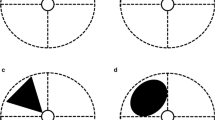Summary
Background
The role of sentinel lymph node biopsy (SLNB) in patients with a core needle-biopsy diagnosis of ductal carcinoma in situ (DCIS) has been intensely debated. Core needle-biopsy has an inherent sampling error leading to histologic underestimation of invasive disease. If SLNB is not performed at the time of the definitive operative procedure, patients found to have an invasive cancer, will require a second operative procedure. The study was designed to determine when the risk of finding invasive disease on final pathology in patients with an initial diagnosis of DCIS was sufficiently high to justify the use of SLNB.
Methods
We identified 587 women with an initial core needle-biopsy diagnosis of DCIS in the prospective Breast Test Wales (BTW) database from 1995 through 2005. A variety of clinical, mammographic and histologic features were identified and correlated with the presence of invasion at excision using univariate and multivariate analyses.
Results
Median age of patients at the time of diagnosis was 58 years (range 41 to 83 years). 201 patients (36%) were treated by mastectomy and 354 (64%) by breast conservation surgery. 220 of 587 patients (38%) were found to have invasive disease on final pathology. On univariate analysis, the rate of upstaging was related to the presence of a clinically palpable mass and size of the mass (both p<0.0001, Mann–Whitney test); mammographic presence of a mass and size of the mass (both p<0.0001, Mann–Whitney test). Multivariate logistic regression analysis revealed 2 independent predictors of invasive cancer on final pathology: mass on clinical examination (odds ratio [OR], 5.09; p<0.0001) and mammographic mass (OR, 7.37; p<0.0001). Age, grade of DCIS, microinvasion and presence of comedonecrosis did not help in distinguishing between patients with DCIS and those upstaged to invasive carcinoma at definitive surgery. Axillary nodal staging (four node sampling or clearance) was done at the time of surgery in 269 patients. Axillary nodal metastases were found in 35 of 269 patients (13%). All 35 patients had invasive carcinoma on final pathology.
Conclusion
The indiscriminate use of SLNB in patients with DCIS seems excessive. Our study suggests that patients with a mass on clinical examination or mammogram have an increased risk of invasive disease at the time of definitive operative procedure and should undergo SLNB at the initial procedure. In addition, SLNB should be performed in patients undergoing mastectomy because mastectomy precludes SLNB if invasive disease is subsequently discovered.
Similar content being viewed by others
Reference
UK NHS Breast Screening Programme Statistics 2003–2004. http://www.cancerscreening.nhs.uk/breastscreen/statistics.html
Silverstein MJ, Gierson ED, Waisman JR, Senofsky GM, Colburn WJ, Gamagami P, 1994; Axillary lymph node dissection for T1a breast carcinoma Is it indicated? Cancer 73(3):664–667
Yiangou C, Shousha S, Sinnett HD 1999; Primary tumour characteristics and axillary lymph node status in breast cancer Br J Cancer 80(12):1974–1978
Mansel RE, Goyal A, Fallowfield L, Newcombe RG, 2004; Sentinel node biopsy versus standard axillary treatment: results of the randomized multicenter UKALMANAC trial Breast Cancer Res Treat 88:S13
Yen TW, Hunt KK, Ross MI, Mirza NQ, Babiera GV, Meric-Bernstam F, et al. 2005; Predictors of invasive breast cancer in patients with an initial diagnosis of ductal carcinoma in situ: a guide to selective use of sentinel lymph node biopsy in management of ductal carcinoma in situ J Am Coll Surg 200(4):516–526
Won B, Reynolds HE, Lazaridis CL, Jackson VP, 1999; Stereotactic biopsy of ductal carcinoma in situ of the breast using an 11-gauge vacuum-assisted device: persistent underestimation of disease AJR Am J Roentgenol 173(1):227–229
Mittendorf EA, Arciero CA, Gutchell V, Hooke J, Shriver CD, 2005; Core biopsy diagnosis of ductal carcinoma in situ: an indication for sentinel lymph node biopsy Curr Surg 62(2):253–257
Lee CH, Carter D, Philpotts LE, Couce ME, Horvath LJ, Lange RC, et al. 2000; Ductal carcinoma in situ diagnosed with stereotactic core needle biopsy: can invasion be predicted? Radiology 217(2):466–470
Jackman RJ, Burbank F, Parker SH, Evans WP III, Lechner MC, Richardson TR, et al. 2001; Stereotactic breast biopsy of nonpalpable lesions: determinants of ductal carcinoma in situ underestimation rates Radiology 218(2):497–502
Hoorntje LE, Schipper ME, Peeters PH, Bellot F, Storm RK, Borel RI, 2003; The finding of invasive cancer after a preoperative diagnosis of ductal carcinoma-in-situ: causes of ductal carcinoma-in-situ underestimates with stereotactic 14-gauge needle biopsy Ann Surg Oncol 10(7):748–753
Cox CE, Nguyen K, Gray RJ, Salud C, Ku NN, Dupont E, et al., 2001; Importance of lymphatic mapping in ductal carcinoma in situ (DCIS): why map DCIS? Am Surg 67(6):513–519
Julian TB, Krag DN, Brown A, Anderson S, Harlow S, Ashikaga T, et al.: Preliminary technical results of NSABP B-32, a randomized phase III clinical trial to compare sentinel node resection to conventional axillary dissection in clinically node-negative breast cancer patients. Presented at the 27th Annual San Antonio Breast Cancer Symposium, San Antonio, Texas, December 8–11, 2004
Wilkie C, White L, Dupont E, Cantor A, Cox CE, 2005; An update of sentinel lymph node mapping in patients with ductal carcinoma in situ Am J Surg 190(4):563–566
Renshaw AA, 2002; Predicting invasion in the excision specimen from breast core needle biopsy specimens with only ductal carcinoma in situ Arch Pathol Lab Med 126(1):39–41
Acknowledgement
The authors would like to thank all staff at Breast Test Wales, Cardiff for their help with this research project.
Author information
Authors and Affiliations
Corresponding author
Rights and permissions
About this article
Cite this article
Goyal, A., Douglas-Jones, A., Monypenny, I. et al. Is there a role of sentinel lymph node biopsy in ductal carcinoma in situ?: analysis of 587 cases. Breast Cancer Res Treat 98, 311–314 (2006). https://doi.org/10.1007/s10549-006-9167-2
Received:
Accepted:
Published:
Issue Date:
DOI: https://doi.org/10.1007/s10549-006-9167-2




